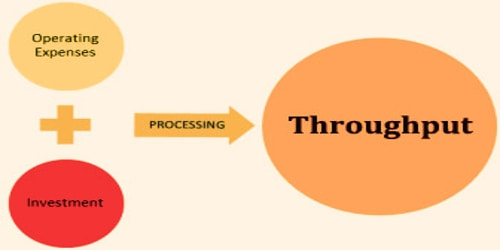Meaning of Cost of Capital
Cost of Capital is the rate of return the firm expects to earn from its investment in order to increase the value of the firm in the market place. The investment decision is a major decision for an organization. The underinvestment decision process, the cost, and the benefit of prospective projects are analyzed and the best alternative is selected on the basis of the result of the analysis. The cost of capital is the required return necessary to make a capital budgeting project, such as building a new factory, worthwhile. It is also known as the minimum required rate of return, the weighted average cost of capital, cut off rate, hurdle rate, standard return, etc. This concept is also widely used in economics and accounting. It is determined on the basis of the component cost of financing and the proportion of these sources in the capital structure.
A firm’s cost of capital is typically calculated using the weighted average cost of capital formula that considers the cost of both debt and equity capital. Business firms raise the needed fund from internal sources and external sources. Undistributed and retained profit is the main source of internal funds. The external fund is raised either by the issue of shares or by the issue of debenture (debt) or by both means. The fund collected by any means has not cost-free. Interest is to be paid on the fund obtained as debt and dividend is to be paid on the fund collected through the issue of shares. The average cost rate of different sources of funds is known as the cost of capital. The cost of capital becomes a critical factor in deciding which financing track to follow—debt, equity, or a combination of the two.
The cost of capital can best be described as the ability to cover both asset and liability expenditures while generating a profit. From the viewpoint of return, cost of capital is the minimum required rate of return to be earned on an investment. In other words, the earning rate of a firm which is just sufficient to satisfy the expectation of the contributors of capital is called the cost of capital. An investor always wants to put money into a company that will exceed the cost of capital and thus generates returns that are proportionate with the risk. Shareholders and debenture holders are the contributors to the capital.
For example, a firm needs $ 5,00,000 for investing in a new project. The firm can collect $3,00,000 from shares on which it must pay a 12% dividend and $ 2,00,000 from debentures on which it must pay 7% interest. If the fund is raised and invested in the project, the firm must earn at least $50,000 which becomes sufficient to pay $36,000 dividend (12% of $3,00,000) and $14000 interest(7% of $2,00,000). The required earning $50,000 is 12% of the total fundraised. This 12% rate of return is called the cost of capital. In a nutshell, it’s a rate of return that can help companies decide to move forward on a project or help an investor determine the risk of investing in a company.
















